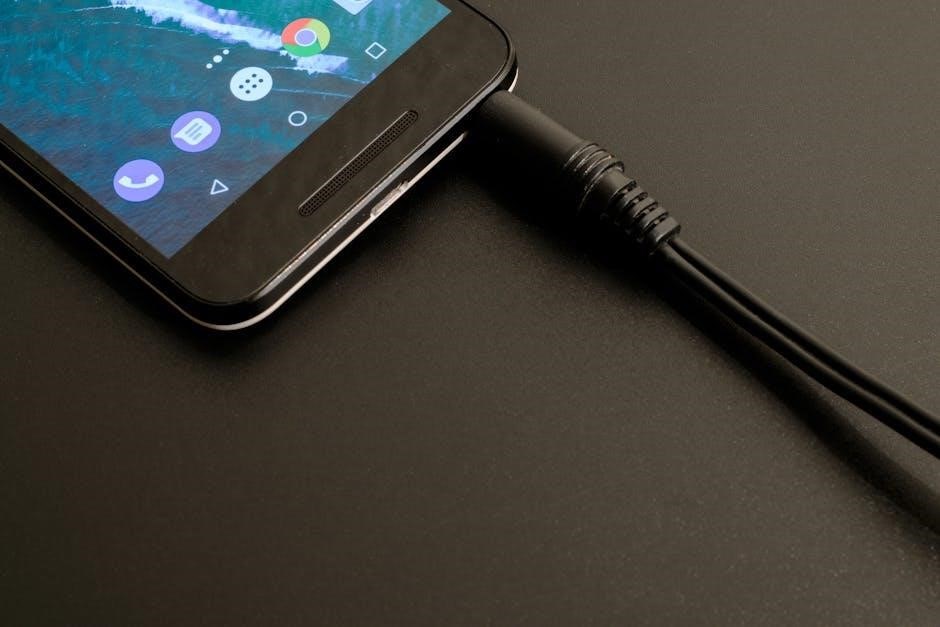The Schumacher HD Battery Charger manual provides guidance on using the charger effectively and safely, with clear instructions and warnings to ensure proper operation and maintenance of the device always.
Understanding the Basics of Battery Charging
To understand the basics of battery charging, it is essential to know how batteries work and the principles of charging. The Schumacher HD Battery Charger manual explains that batteries have a limited number of charge cycles, and improper charging can reduce their lifespan. Charging a battery involves replenishing the chemical energy stored in it, and the charger must be set to the correct amp rate to avoid overcharging or undercharging. The manual provides guidance on how to determine the correct charge rate and how to monitor the charging process; By following the guidelines outlined in the manual, users can ensure that their batteries are charged safely and efficiently, and that they get the most out of their batteries. The manual also covers the importance of proper maintenance and storage of batteries to extend their lifespan. Proper charging techniques are crucial.
Overview of the Schumacher HD Battery Charger
The Schumacher HD Battery Charger is a device designed to charge batteries safely and efficiently always with easy to use interface and multiple charging options available always.
Key Components and Features of the Charger
The Schumacher HD Battery Charger has several key components and features that make it an effective and safe device for charging batteries. The charger has a user-friendly interface that allows users to easily select the desired charging mode and monitor the charging process. The charger also has multiple charging options, including a 2 amp and 10 amp charging mode, which allows users to charge batteries at a rate that is suitable for their specific needs. Additionally, the charger has a built-in safety feature that prevents overcharging and helps to prolong the life of the battery. The charger also has a durable construction and is designed to be compact and portable, making it easy to use in a variety of settings. The charger’s components and features work together to provide a safe and efficient charging experience.

Interpreting the Charger’s Display
The charger’s display shows the charge level and amp draw, helping users monitor the charging process and ensure safe operation always and correctly.
Understanding the Amp Draw and Charge Level
The Schumacher HD Battery Charger manual explains that the amp draw and charge level are crucial parameters to monitor during the charging process. The charger’s display shows the amp draw, which indicates the amount of current flowing into the battery. The charge level, on the other hand, shows the battery’s state of charge, ranging from 0 to 100 percent. Understanding these parameters helps users optimize the charging process and prevent overcharging or undercharging, which can damage the battery. The manual provides guidance on how to interpret the amp draw and charge level, ensuring safe and effective charging. By monitoring these parameters, users can ensure their batteries are charged correctly and maintain their performance and longevity. The charger’s display is designed to provide clear and accurate information, making it easy to understand the charging process.

Setting the Charge Rate
Setting the charge rate is crucial for safe and effective charging, with options for 2 or 10 amps, depending on the battery type and charging needs always.
Choosing the Right Amp Setting for Your Battery
To choose the right amp setting for your battery, consider the battery’s capacity and type, as well as the charging time available. The Schumacher HD Battery Charger manual recommends using the 2 amp setting for smaller batteries or for overnight charging, while the 10 amp setting is suitable for larger batteries or for quicker charging. It is essential to select the correct amp setting to avoid overcharging or undercharging the battery, which can affect its performance and lifespan. The charger’s display will show the selected amp setting, and the user can adjust it according to their needs. By choosing the right amp setting, users can ensure safe and effective charging of their batteries, and extend their overall lifespan. The manual provides guidance on selecting the correct amp setting for different battery types and sizes.

Charging Your Battery
Connect cables and plug in the charger to start charging the battery slowly always.
Connecting the Cables and Plugging in the Charger
To begin charging, connect the cables to the battery and charger, ensuring a secure and proper connection is made, then plug in the charger to start the charging process.
The charger’s cables should be connected to the correct terminals on the battery, with the positive cable attached to the positive terminal and the negative cable attached to the negative terminal.
It is essential to double-check the connections to avoid any mistakes or damage to the charger or battery.
Once the cables are connected, plug in the charger and turn it on, allowing the charging process to commence.
The charger will then begin to supply power to the battery, and the charging process will start, with the charger’s display showing the charge level and amp draw.
Proper connection and plugging in of the charger are crucial for safe and effective charging of the battery, and the user should follow the manufacturer’s instructions carefully.

Tips for Optimal Battery Charging
Slow charging is recommended to prevent overheating and extend battery life always using the Schumacher HD charger effectively.
Why Slow Charging is Recommended
Slow charging is recommended to prevent overheating and extend battery life, using the Schumacher HD charger effectively. This method helps to reduce the risk of damage to the battery and its components. The charger’s lower amp settings, such as the 2 amp rate, are ideal for slow charging, allowing the battery to charge gradually over a longer period. This approach is particularly useful for maintaining the health and longevity of the battery, especially when it is not heavily used. By adopting slow charging, users can help to minimize the stress on the battery, reducing the likelihood of premature wear and tear, and ensuring that the battery remains in good condition for a longer period, which is an important consideration for optimal battery maintenance and performance. Proper use of the charger is essential to achieve these benefits.
Common Issues and Troubleshooting
Troubleshooting the Schumacher HD charger involves checking connections and settings to resolve issues quickly and effectively always.
Identifying and Resolving Connection Problems
To identify connection problems with the Schumacher HD battery charger, check the cables and clamps for any signs of damage or wear. Ensure that the cables are properly connected to the battery and the charger. If the charger is not turning on, check the power cord and plug for any issues. Also, verify that the selector switch is set to the correct amp setting for the battery being charged. If the charger is still not functioning, try resetting it or consulting the manual for troubleshooting guides. It is essential to resolve connection problems promptly to avoid any damage to the charger or the battery. Regular maintenance and inspection of the cables and connections can help prevent issues and ensure safe and effective charging. Proper connection is crucial for the charger to work correctly and charge the battery efficiently.

